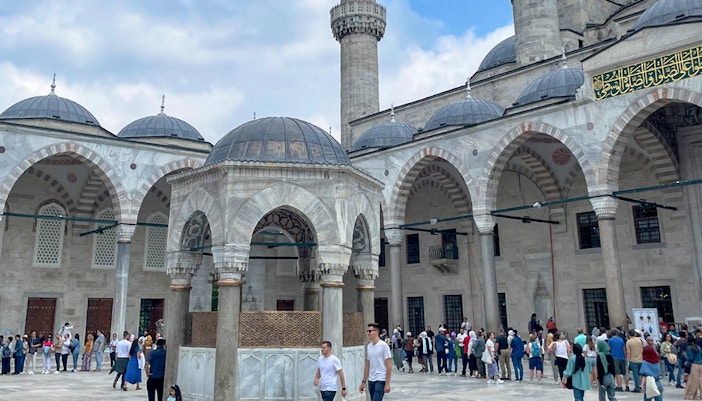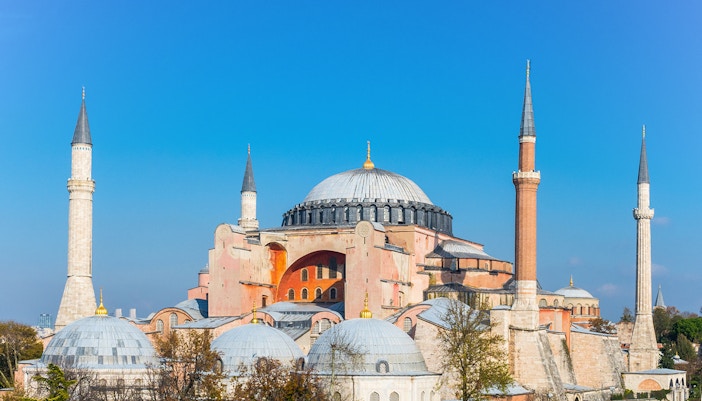The Blue Mosque, is a masterpiece of Ottoman architecture, showcasing a harmonious blend of Islamic and Byzantine influences. Completed in 1616, it reflects the design brilliance of architect Mehmet Ağa. The mosque's striking six minarets, cascading domes, and intricate blue Iznik tiles are its defining features. Its grandeur and elegance are also said to have been inspired by the timeless masterpiece of Hagia Sophia.
The central dome, flanked by smaller domes and semi-domes, creates an expansive yet balanced interior. The exterior, adorned with cascading domes and slender minarets, presents an awe-inspiring silhouette against the Istanbul skyline. The blue tiles, from which the Sultanahmet Mosque derives its name, feature intricate floral patterns and calligraphy. The courtyard's arcades, ablution fountains, and spacious prayer hall further enhance the mosque's beauty, making it a timeless masterpiece in Islamic architecture.







